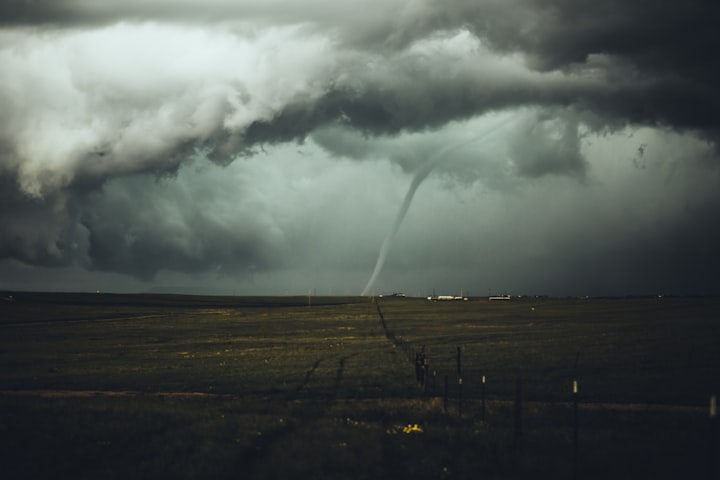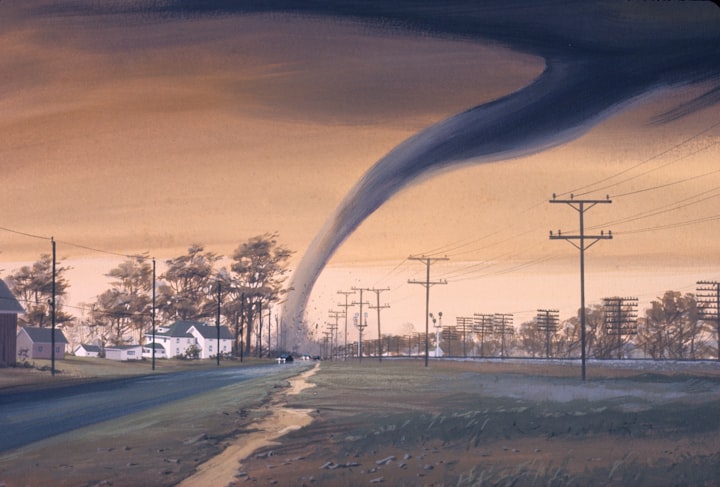
if you live in a place that frequently gets tornados (like Kansas or Texas), chances are you do know what to do when these funnel clouds come to town.
However, tornados do occasionally show up in less likely locations, and you should know what to do.
What Are Tornados?
Tornados are funnels from the ground to the clouds created by extremely high speed spinning air. When they touch down to the ground, they destroy pretty much everything they touch … trees, bushes, houses, cars, animals … everything. And unfortunately, they tend to form quickly with little warning.
Before A Tornado
If you live in an area prone to tornados, you should keep an eye on the weather channel on TV or the Internet or listen for the weather on the radio. However, it helps if you know what type of weather conditions tend to accompany tornados as well. So, if you see these conditions, be especially vigilant and follow the weather news more closely.
How To Know A Tornado Is Coming
Tornados are nearly always preceded by a cold front moving into the area where there is already a warm front with moist air and heavy winds. This added to large, dark, low clouds … or a wall of large, ominous-looking clouds … are perfect conditions for tornados. Also, when a tornado is imminent, there is usually rain, hail, and high winds. These conditions don’t guarantee a tornado, but tornados are usually preceded by such conditions. If you see debris blowing in the winds, that’s a bad sign.
Tornados tend to be very loud (many people describe it as sounding like a freight train), so you will likely hear a tornado coming before you see it. The sky will often turn greenish or greenish-black.
Preparing For A Tornado
To be prepared for a tornado, you should keep a kit in your home including a portable communications radio (e.g., FRS or GPRS), a cell phone with charged batteries, a flashlight (LED type is preferred), and a whistle, horn, or air horn. It’s also helpful to include protective clothing, food, water, batteries, and a portable radio to hear the news reports.
What To Do When A Tornado Is Coming
If you see or hear a tornado … or hear that one has been sighted (i.e., a “tornado warning”) …the best place to be is inside in a basement under an I-beam of the house, in a doorway, in a bathtub, or in the smallest room in your house. The idea is to be in a place with very high compression strength so if debris starts falling you will be protected by a vertical (or very strong horizontal) structural component.
You should also be away from windows in case they break and glass starts flying. If there is no basement, stay in the center of an interior room (i.e., no outside windows or doors) on the lowest level of the house. Also, don’t stay in a corner of the room.
Do not open the windows or doors. Close any window coverings to minimize the potential for flying glass.
If it looks like the tornado will pass through or near your house, get under a strong, heavy table or other furniture or in a bathtub, and cover yourself with a mattress, sofa, pillows, towels, or anything similar to protect yourself from falling and flying debris.
If you are in a mobile home … even if it’s tied down … there is very little protection there. You will be better off moving to a more sturdy structure where the foundation of the building is below ground.
If You Are Outside During A Tornado
If you are outside when a tornado comes around, move out of the tornado’s path; move perpendicular to the path rather than trying to outrun it. Don’t hide behind a tree or stay or hide in a car or truck; these can all be carried off by the tornado.

If possible, get into a storm drain or whatever is the lowest point you can reach. If the best you can reach is a ditch, lie in it face down with your arms protecting your head and neck. However, be aware of the potential for flooding. Also, do not get under an overpass or bridge; you will be safer in a low, flat location where the winds will pass over you instead of being funneled through your hiding place.
WARNING: The best survival technique is to avoid getting into a dangerous situation in the first place. This article presents a few guidelines for what you could do if the situation allows. There is no guarantee if will work every time in every scenario. Please do not put yourself in such a risk situation to “test” this technique.






Comments
There are no comments for this story
Be the first to respond and start the conversation.